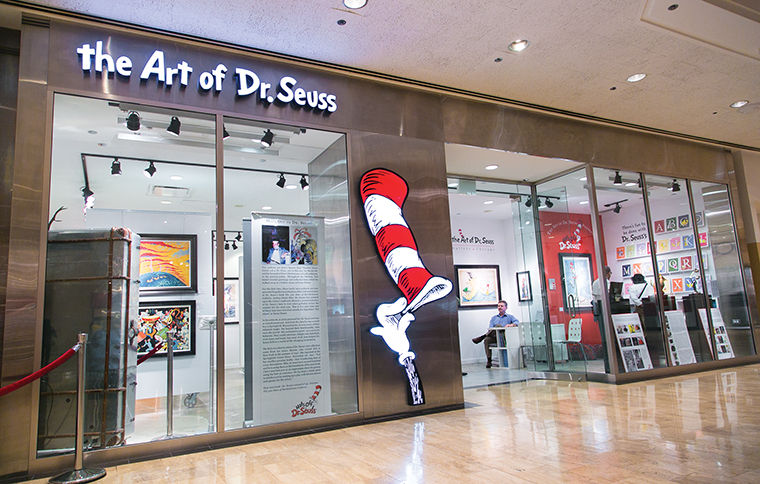Chicago tips its hat to Dr. Seuss gallery
September 29, 2014
For the 75th anniversary of Dr. Seuss’ short story “The 500 Hats of Bartholomew Cubbins,” the Art of Dr. Seuss Gallery at Water Tower Place, 835 N. Michigan Ave., is hosting the “Hats Off to Dr. Seuss!” exhibit displaying Theodor Seuss Geisel’s personal hat collection from Sept. 19–Oct. 12.
The gallery, which displays some of Dr. Seuss’ watercolors, sculptures, prints and drawings, is currently showcasing the traveling edition of a trunk of his hats. The entire collection is housed at the Geisel residence in San Diego, California, with his widow.
Bill Dreyer, the director and curator of the Art of Dr. Seuss collection, began assembling the art collection prior to the addition of the hat collection in 1997.
“I was at the first exhibition of Dr. Seuss’ art in New York City, and I just happened to be in the right place at the right time,” Dreyer said. “I was blown away at the body of work that Seuss created at night for his own personal enjoyment.”
Dreyer said he was introduced to the hats after getting to know Seuss’ widow, Audrey. The hats were in hidden rooms in the family’s James Bond-esque library, Dreyer said.
“What we’re doing at this point is bringing out the two secrets Dr. Seuss kept during his lifetime,” Dreyer said. “One [secret] is his art and the other is the hat collection that only his family and close friends knew about.”
Dreyer asked Geisel if he could bring the hats out to the public in honor of the 75th anniversary of her late husband’s second book, and after she said yes, the exhibit was set into motion.
“The guiding factor [to decide which hats were going to be displayed] was the artwork that seemed to be inspired by certain hats in Dr. Seuss’ collection,” Dreyer said. “When you look at all the hats in the collection, you’ll find that specific hats correlate to either books or characters or artwork that he created.”
Michael Hays, an adjunct professor in the Art + Design Department, said Seuss was an inspiring character for him and his work.
“He’s done so much [in his life] that it’s kind of mind-boggling,” Hays said. “How he manages to do it—the way he writes and illustrates—is really impressive.”
Hays pointed out how Seuss’ most well-known books deal with serious social and political issues. He said this is what he liked most about Seuss’ work.
“His artwork is so weird in some ways, yet he managed to combine really strange looking characters in a style that was so charming, they’re not off-putting at all,” Hays said.
Nina Gregor, a junior creative writing major, also said she was inspired by the poetic meaning in Seuss’ art and writing.
“I think he’s inspired a lot of people with poetry and the way he put deeper themes in his child-like writing,” Gregor said. “I’m [going to school to become] a graphic novelist, so looking at how he portrays his writing through art is something that’s awesome to me.”
As far as the exhibit at the Art of Dr. Seuss gallery at Water Tower Place, Gregor said she has not yet visited the collection but she would like to. She said she thinks the hats are a good addition to the gallery.
“I think [the hats] would open a window to his personal life, and that’s probably never been done before, and it may reveal where his inspiration came from,” Gregor said.








